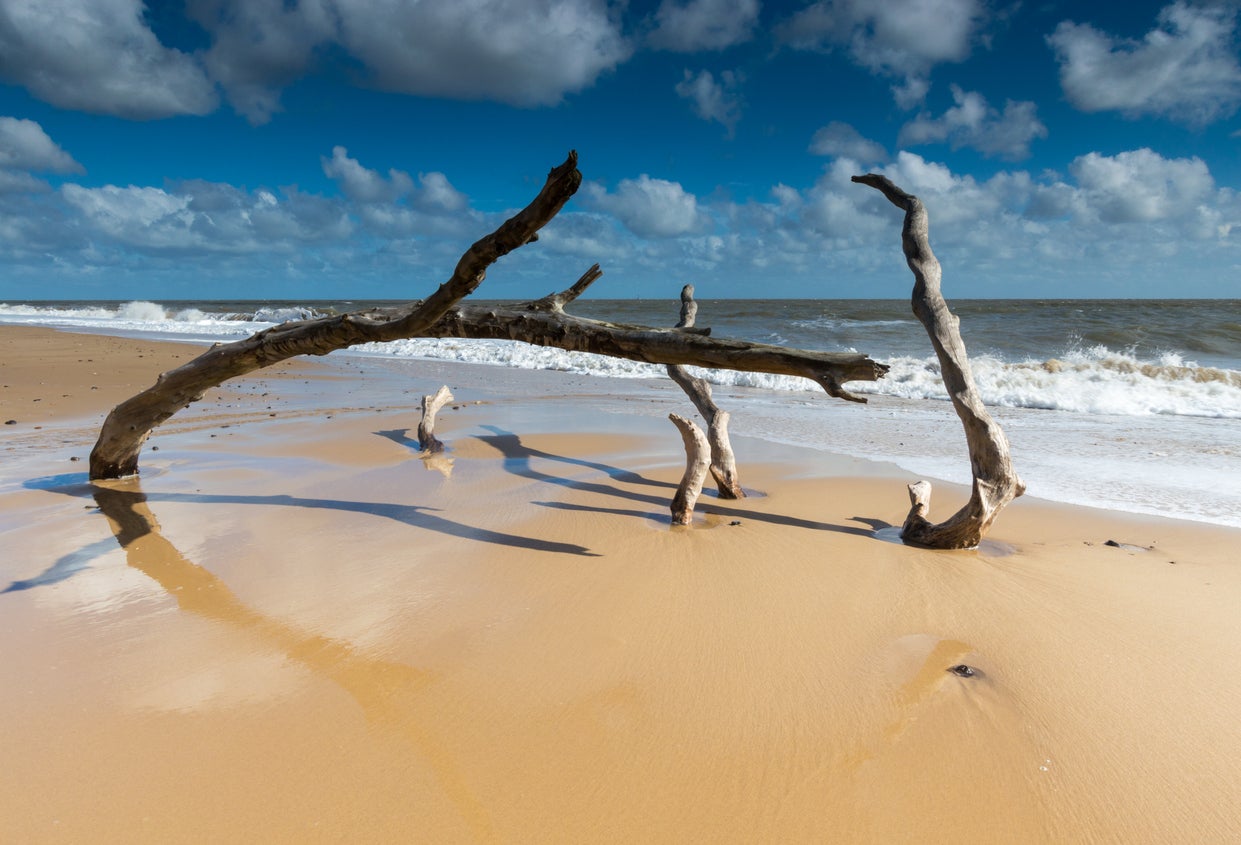One of the UK’s ‘best secret beaches’ could disappear soon
This section of the Suffolk shoreline could erode completely by 2040

Your support helps us to tell the story
From reproductive rights to climate change to Big Tech, The Independent is on the ground when the story is developing. Whether it's investigating the financials of Elon Musk's pro-Trump PAC or producing our latest documentary, 'The A Word', which shines a light on the American women fighting for reproductive rights, we know how important it is to parse out the facts from the messaging.
At such a critical moment in US history, we need reporters on the ground. Your donation allows us to keep sending journalists to speak to both sides of the story.
The Independent is trusted by Americans across the entire political spectrum. And unlike many other quality news outlets, we choose not to lock Americans out of our reporting and analysis with paywalls. We believe quality journalism should be available to everyone, paid for by those who can afford it.
Your support makes all the difference.A Suffolk beach considered one of the UK’s best stretches of coastline could be lost to the North Sea in as little as 16 years.
Covehithe Beach in the Benacre National Nature Reserve has faced significant erosion over the last few decades.
According to the area’s Shoreline Management Plan (SMP), Covehithe’s cliffs are eroding at a rate of 4.5 metres a year – one of the highest rates in the country.
Covehithe’s sandy swathe is studded with tree branches and stretches towards Southwold’s Victorian pier, and it was named one of the UK’s best secret beaches in April by The Times.
The SMP intend to use the coastal erosion to protect other towns, such as Southwold, in the surrounding area.
“The erosion of the cliffs provides a major supply of sediment to the coastal system and this is essential for maintaining defence to other parts of the coast,” the coastal management group said.
Geological evaluations estimated that 500 metres of cliffside were lost to the sea between the 1830s and 2001.
Now experts have warned that the shore could disappear entirely by 2040.
The SMP say that preventing the high rate of erosion would be “technically, economically, or environmentally unsustainable”, and no defences will be introduced “due to their impact on other communities, or on sites protected for their environmental importance”.
Almost 300 metres away from the shoreline, the village of Covehithe including the Grade I listed St Andrew’s Church, could also disappear into the North Sea by 2110, say the Environmental Agency.
The UK shoreline has been feeling the effects of rising sea levels for years.
In December, demolition work began in clifftop homes in in Hemsby, Norfolk, a village hit by coastal erosion, high tides and strong winds that meant several properties in The Marrams were no longer safe to occupy.
Join our commenting forum
Join thought-provoking conversations, follow other Independent readers and see their replies
Comments